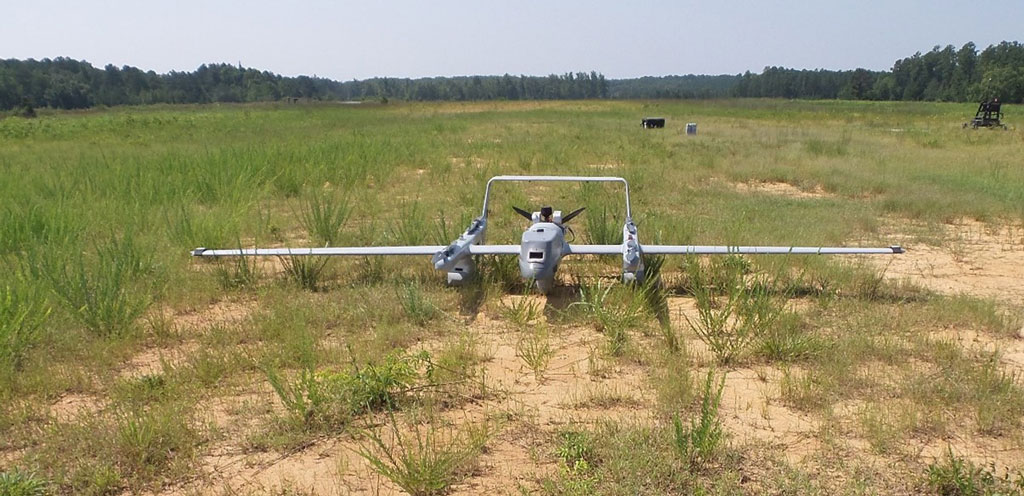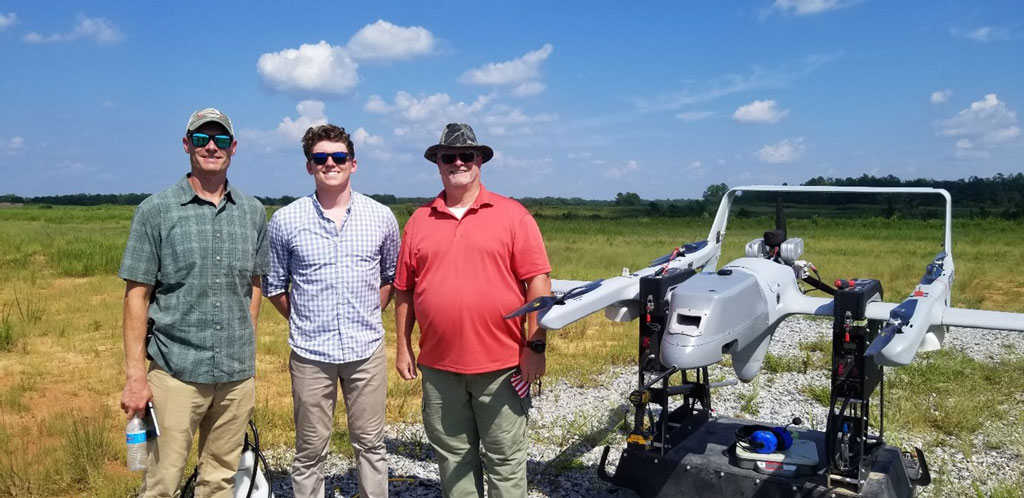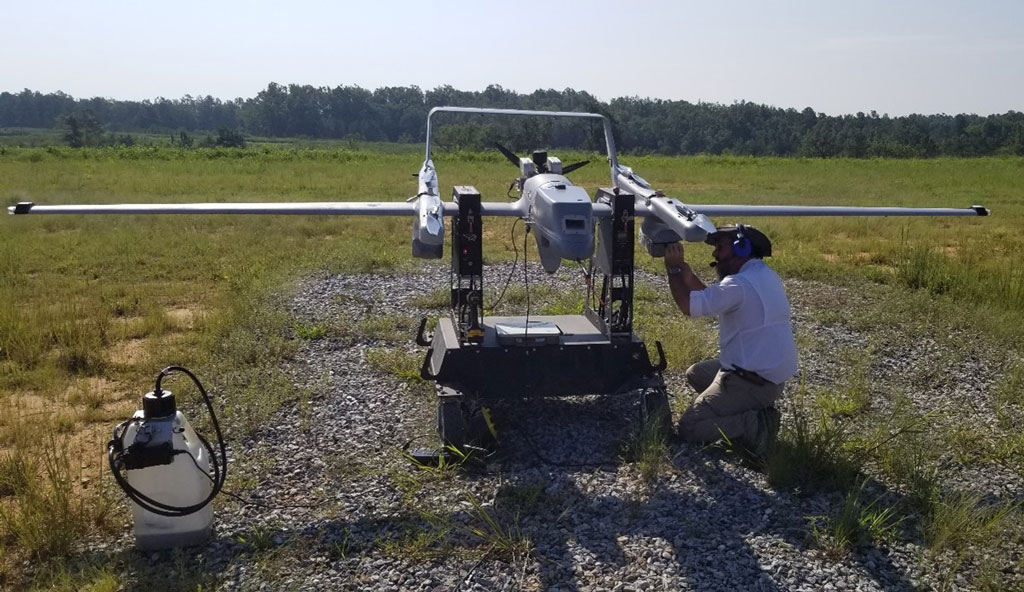Project Crimson Soars at MSSPIX ’21 Event
September 30, 2021 | Download PDF
It’s bird! It’s a plane! No, it’s Project Crimson! While not truly a superhero, this TATRC-sponsored SBIR effort sure showed some hero-level capabilities in its first official live prototype assessment at the Maneuver Support, Sustainment, and Protection Integration eXperiments 2021 (MSSPIX ’21) at Ft. Pickett, VA this past fall. MSSPIX is a collaboration between the Maneuver Support Center of Excellence and the Sustainment Center of Excellence and one of the Army’s live prototype assessments, part of the Army’s Campaign of Learning. MSSPIX ‘21 provided a valuable learning venue to better understand military problems and potential solutions through experimentation in a Multi-Domain Operations relevant environment in support of Army Modernization. The goal of Project Crimson is to develop an autonomous unmanned aerial system (UAS) system for “Just-in-Time” delivery of blood products and other critical medical supplies to remote, contested battlefield environments to support prehospital casualty care. To meet the outlined project goals, TATRC’s Medical Robotics and Autonomous Systems (MedRAS) division collaborated with Near Earth Autonomy to integrate its cutting edge Peregrine Autonomy System with the L3Harris FVR-90 UAS aircraft.

Move over, Amazon! Altogether, this combined platform supports the delivery of up to 8 units of temperature-controlled whole blood, or 20 pounds of cargo, at distances up to 400 kilometers away. The FVR-90 aircraft is unique hybrid Vertical Takeoff and Landing UAS. This means that it can take off in a similar fashion to a helicopter, without the need for forward infrastructure (e.g. a runway or mechanical launch and recovery system), but still travel at the high speeds and far distances of a traditional winged aircraft. This allows the aircraft the flexibility to deliver cargo to unprepared landing zones in austere environments, a key differentiator compared to other long-range delivery methods. The aircraft navigates autonomously to delivery zones specified by the field user through route planning and GPS navigation. Upon arrival, the system scans the landing area via LIDAR to identify any potential ground obstacles and then autonomously lands in an ideal, safe location. Alternatively, depending on operational requirements, the aircraft can release its cargo pods while in the air, either during hover at low altitudes or during forward flight using a parachute drop mechanism. During the MSSPIX event, each of these delivery modes were successfully demonstrated across three remote and unprepared delivery zones with varying obstacles and terrain.

MedRAS Division Chief, Nathan Fisher and Biomedical Engineer, Zack Buono led the Project Crimson involvement in MSSPIX ‘21 on the government side, in partnership with the technology performers, Near Earth Autonomy and L3Harris. This event allowed soldiers to interact with the system first-hand in an operationally relevant environment to provide valuable feedback to the technology developers. Nate and Zack have been guiding the technology development of this system in coordination with stakeholders from across the operational community. “Throughout the development of this project, we have had strong support from the operational community and capability developers, which ultimately led to the success we achieved at the MSSPIX event. All involved are eager to see this technology in the field because of its potential to contribute to future missions and save lives”, stated Mr. Fisher.

The event was well attended by project stakeholders from key groups such as the U.S. Army Special Operations Command, U.S. Army Institute for Surgical Research, Marine Corp Warfighter Lab, Medical Capability Development and Integration Directorate, the Joint AI Center, and others. Attendees conveyed a high-level of support of the project’s capabilities with interest in supporting future technology maturation and transition. The Project Crimson team is currently planning the next phase of technology maturation with a planned test and evaluation event in 2022.
For more information on Project Crimson, please contact Mr. Nate Fisher at: nathan.t.fisher3.civ@mail.mil.
This article was published in the April 2022 issue of the TATRC Times.